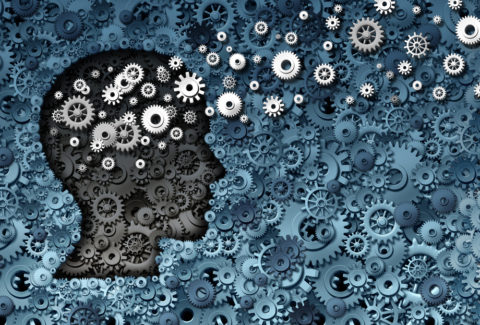Extrinsic Motivation and Behavior Change
Extrinsic motivation refers to the drive to engage in a behavior or activity not for its inherent enjoyment or satisfaction but for external rewards or to avoid negative consequences.[1] This type of motivation plays a significant role in behavior change, influencing individuals’ actions in various contexts, including health, education, and workplace settings. Understanding extrinsic motivation can help mental health professionals, educators, and leaders create effective strategies to facilitate behavior change.
Understanding Extrinsic Motivation
Extrinsic motivation can be characterized by:
- External Rewards: Individuals may be motivated by tangible rewards such as money, prizes, recognition, or grades. These external incentives can drive people to engage in behaviors they might not otherwise find appealing.[2]
- Avoidance of Punishment: Fear of negative consequences, such as criticism, loss of privileges, or legal repercussions, can also motivate individuals to change their behaviors. This avoidance behavior can be powerful, as individuals may act to escape undesirable outcomes.
- Social Approval: Many people are motivated by the desire for acceptance and approval from others. Social pressure and the need for validation can drive behavior change, prompting individuals to conform to societal norms or expectations.
- Competition: In competitive[3] environments, individuals may be motivated to change their behaviors to outperform others. The desire to win or to be recognized as superior can lead to significant behavior change, particularly in group settings.
The Role of Extrinsic Motivation in Behavior Change
- Immediate Impact: Extrinsic motivation can lead to quick behavior changes. For example, rewards can provide immediate incentives for adopting healthier habits, completing tasks, or meeting specific goals.
- Behavior Regulation: External motivators can help regulate behavior in the short term.[4] For individuals struggling with self-control or discipline, external rewards can provide the necessary push to initiate and maintain behavior change.
- Structured Environments: Extrinsic motivators are often effective in structured settings, such as workplaces or educational institutions[5], where clear guidelines and rewards can be established. These motivators can enhance compliance and accountability.
- Increased Participation: The promise of external rewards can encourage individuals to participate in activities they might avoid otherwise. For instance, health programs that offer incentives for attendance or goal achievement can boost engagement and compliance.
Limitations of Extrinsic Motivation
- Temporary Change: While extrinsic motivators can initiate behavior change, they may not lead to long-term commitment. Once the rewards are removed or diminished, individuals may revert to their previous behaviors, especially if they lack intrinsic motivation.
- Overjustification Effect: Relying heavily on external rewards can undermine intrinsic motivation. When individuals are rewarded for behaviors they once found enjoyable, they may come to view those behaviors as work rather than as sources of personal satisfaction.[6]
- Quality of Engagement: Extrinsic motivation may lead to surface-level engagement. Individuals motivated by rewards may focus solely on meeting the criteria for those rewards rather than embracing the full value of the experience or the learning involved.
- Dependence on External Validation: Individuals who rely on external validation may struggle with self-efficacy and self-esteem. If their sense of worth is tied to external rewards, they may find it challenging to remain motivated in the absence of those rewards.
Strategies to Enhance Extrinsic Motivation for Behavior Change
- Provide Clear Goals and Expectations: Setting specific, measurable goals[7] can help individuals understand what is required of them and what they stand to gain. Clear expectations can enhance motivation by providing a roadmap for success.
- Offer Tangible Rewards: Consider implementing reward systems that offer tangible incentives for achieving milestones. This could include gift cards, certificates, recognition, or other forms of appreciation that can motivate individuals to engage in desired behaviors.
- Create Competitive Opportunities: In group settings, fostering a healthy competitive environment can enhance motivation. Leaderboards, challenges, or contests can encourage individuals to strive for improvement and engage in desired behaviors.
- Incorporate Social Elements: Leverage social motivation by creating opportunities for individuals to share their progress and successes. Encouragement from peers can enhance motivation and foster a sense of community.[8]
- Utilize Gamification[9]: Integrating game-like elements into behavior change initiatives can enhance extrinsic motivation. This may include point systems, badges, or levels that individuals can achieve as they progress in their behavior change efforts.
- Acknowledge Efforts: Recognizing individuals’ efforts, even if they do not achieve the desired outcome, can help maintain motivation. Providing constructive feedback and celebrating small successes can encourage continued engagement.
Conclusion
Extrinsic motivation is a powerful tool for facilitating behavior change, particularly in structured environments where immediate results are desired. While it has its limitations, understanding how to effectively harness extrinsic motivation can lead to significant positive changes in individuals’ behaviors. By strategically implementing external rewards, setting clear goals, and fostering a supportive environment, mental health professionals, educators, and leaders can create effective behavior change initiatives that encourage individuals to take action and strive for improvement. Balancing extrinsic motivation with efforts to cultivate intrinsic motivation can lead to sustainable and fulfilling behavior change that promotes overall well-being.
[1] Reeve, Johnmarshall. “Extrinsic rewards and inner motivation.” Handbook of classroom management. Routledge, 2013. 655-674.
[2] Bear, George G., et al. “Rewards, praise, and punitive consequences: Relations with intrinsic and extrinsic motivation.” Teaching and Teacher Education 65 (2017): 10-20.
[3] Orosz, Gábor, Dávid Farkas, and Christine Roland-Lévy. “Are competition and extrinsic motivation reliable predictors of academic cheating?.” Frontiers in psychology 4 (2013): 87.
[4] Dishman, Rod K., et al. “Motivation and behavioral regulation of physical activity in middle-school students.” Medicine and science in sports and exercise 47.9 (2015): 1913.
[5] Kuvaas, Bård, et al. “Do intrinsic and extrinsic motivation relate differently to employee outcomes?.” Journal of Economic Psychology 61 (2017): 244-258.
[6] Lepper, Mark R., and David Greene. “Overjustification research and beyond: Toward a means—ends analysis of intrinsic and extrinsic motivation.” The hidden costs of reward. Psychology Press, 2015. 109-148.
[7] Karlen, Yves, et al. “The role of implicit theories in students’ grit, achievement goals, intrinsic and extrinsic motivation, and achievement in the context of a long-term challenging task.” Learning and Individual Differences 74 (2019): 101757.
[8] Tang, Qing, Xuefeng Zhao, and Shan Liu. “The effect of intrinsic and extrinsic motivations on mobile coupon sharing in social network sites: the role of coupon proneness.” Internet Research 26.1 (2016): 101-119.
[9] Richter, Ganit, Daphne R. Raban, and Sheizaf Rafaeli. Studying gamification: The effect of rewards and incentives on motivation. Springer International Publishing, 2015.`







